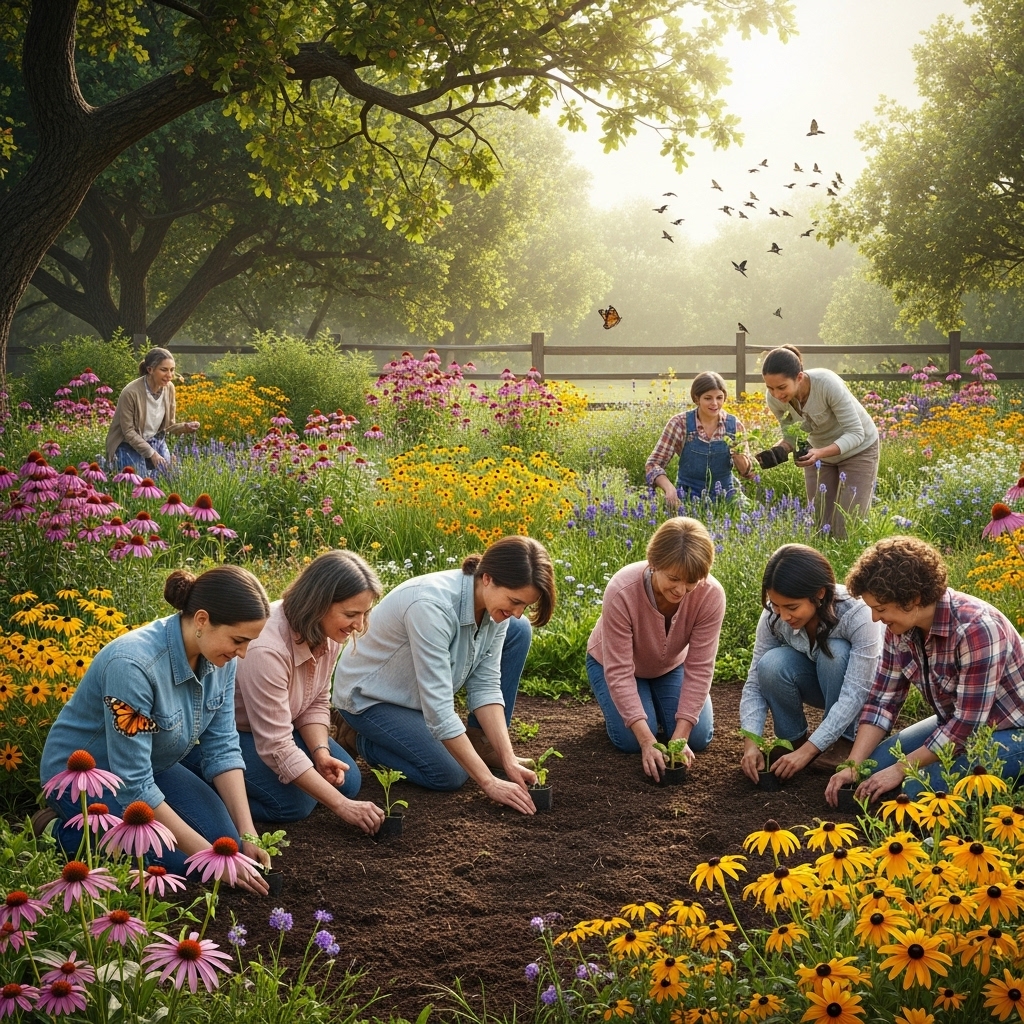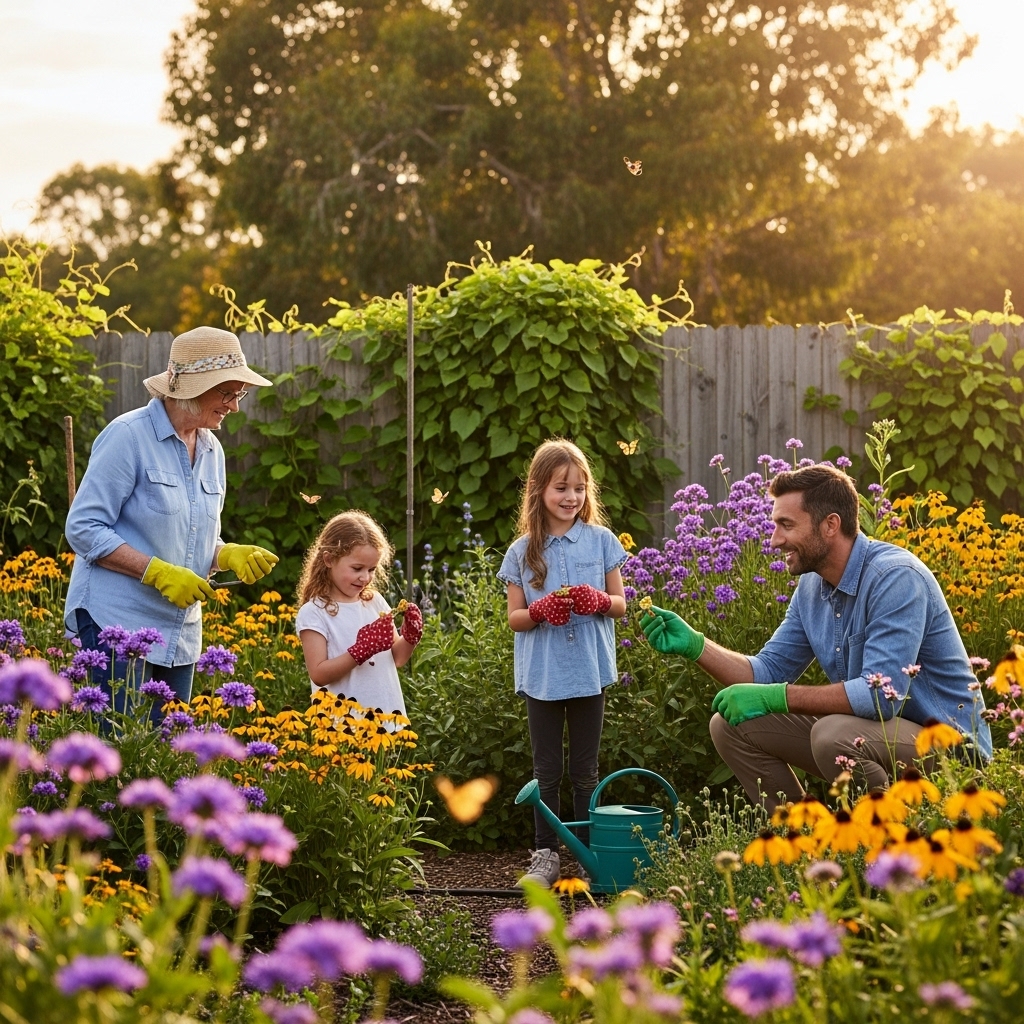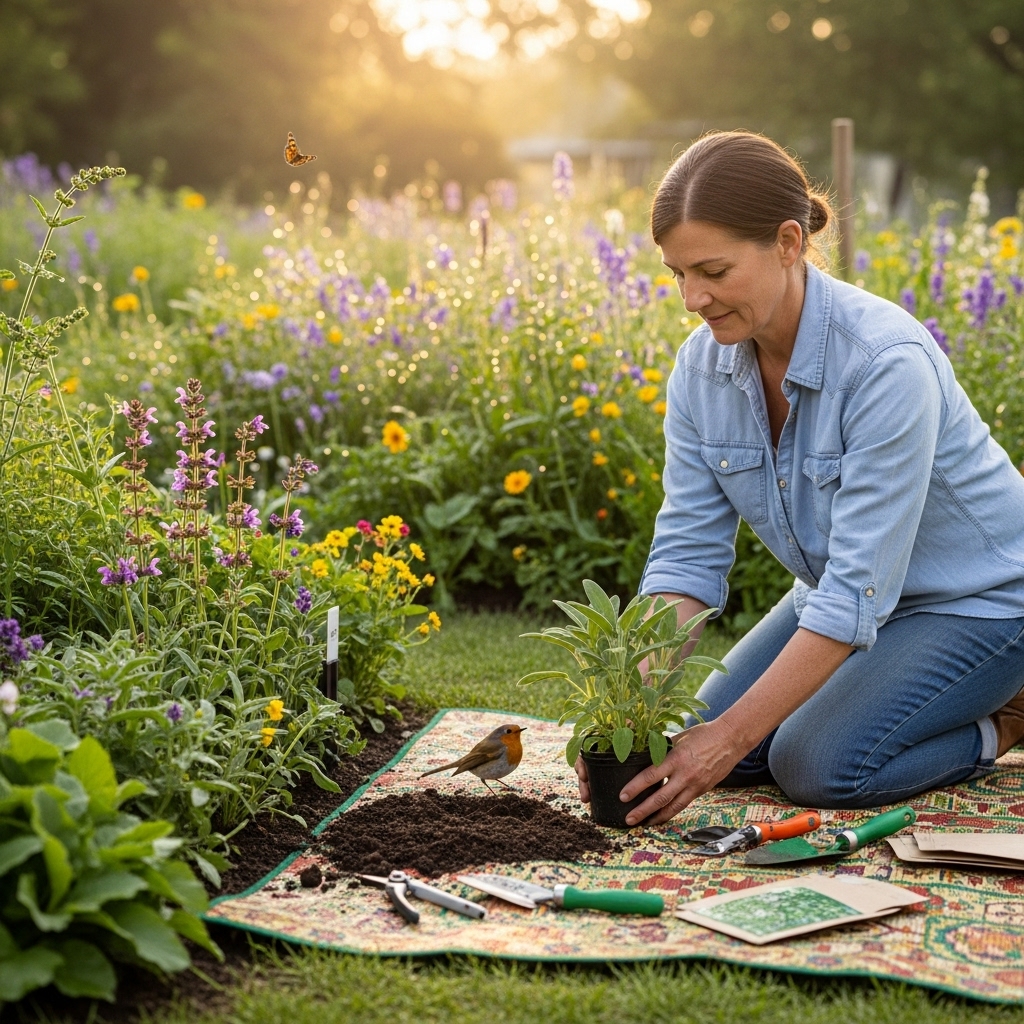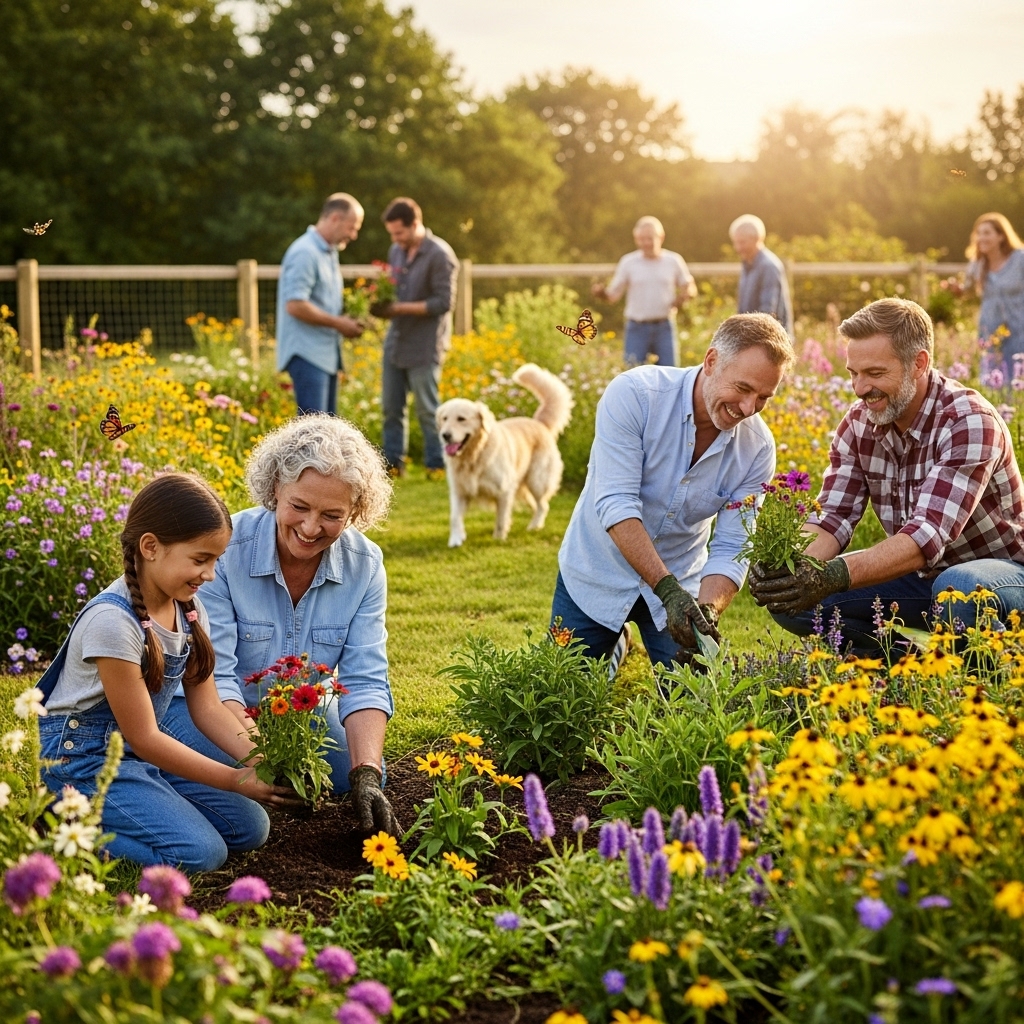Spring is the perfect time to transform your outdoor space into a vibrant native garden. Not only does it support local wildlife, but it also fosters a unique connection to nature that can be truly rewarding.
Understanding Native Plants

As I embarked on my journey to create a native garden, I quickly realized that understanding what native plants are and why they matter is crucial. Native plants are species that naturally occur in a specific region, having adapted to the local climate, soil, and ecosystem over thousands of years. When I first looked into native gardening, I was struck by how these plants are perfectly suited to thrive without the need for excessive water, fertilizers, or pesticides. This not only makes them easier to care for, but it also means they are less likely to become a nuisance or require constant attention.
The Benefits of Native Gardens
One of the most appealing aspects of planting a native garden is the myriad of benefits it offers. When I started my native garden, I noticed the following advantages:
- Supporting Local Wildlife: Native plants provide essential habitats and food sources for local wildlife, including birds, butterflies, and beneficial insects. I love watching the butterflies flutter around my garden, knowing that I’m helping to sustain their populations.
- Low Maintenance: Since native plants are well-adapted to the local environment, they require less water and care compared to non-native species. This was a game-changer for me as I often find myself busy with work and other commitments.
- Soil Health: Native plants contribute to improved soil health by supporting various microorganisms and insects. I’ve noticed how the soil in my garden has become richer and more alive since I started planting native species.
- Reduced Invasive Species: By planting native plants, I am helping to reduce the chances of invasive species taking hold in my garden. I’ve seen firsthand how some non-native plants can overrun a garden, choking out the native flora.
Choosing the Right Native Plants
Choosing the right plants for my garden was one of the most enjoyable parts of the process. I began by researching which native plants thrive in my local area. I found that state extension services, local botanical gardens, and native plant societies are excellent resources for this information. I also made sure to consider the specific conditions of my garden, such as sunlight, soil type, and moisture levels.
Some native plants I found particularly appealing included:
- Black-eyed Susan (Rudbeckia hirta): This cheerful flower brightens up any garden with its vibrant yellow petals and dark center. I love how it attracts pollinators.
- Butterfly Weed (Asclepias tuberosa): Known for its stunning orange flowers, this plant is a magnet for monarch butterflies. Watching them flutter around has been a joy.
- Eastern Red Cedar (Juniperus virginiana): This evergreen provides excellent cover for birds and other wildlife. I appreciate its year-round greenery in my garden.
- Wild Bergamot (Monarda fistulosa): With its delightful fragrance and beautiful pink-purple flowers, this plant attracts bees and hummingbirds, making my garden a lively spot.
Planning the Layout of Your Native Garden
Once I had selected my plants, it was time to plan the layout. I found that creating a thoughtful arrangement not only enhanced the aesthetics of my garden but also accommodated the needs of the plants. I began sketching a simple design on paper, considering the height and spread of each plant. This way, taller plants would be positioned at the back or center, while shorter ones would occupy the front edges of the garden bed.
I also thought about blooming times when planning my layout. I wanted to ensure that there would be flowers to enjoy throughout the season. For instance, I placed early bloomers, like the Wild Strawberry, alongside mid-summer favorites, like Coneflower. This way, I could enjoy a continuous display of color and attract various pollinators throughout the spring and summer.
Soil Preparation and Planting
Preparing the soil was another critical step in my gardening adventure. I started by removing any weeds and debris from the area where I planned to plant. After that, I worked in some organic compost to enrich the soil. This was a labor of love, and I truly felt connected to the earth as I mixed the compost into the ground.
When it came time to actually plant, I followed these steps:
- Digging Holes: I dug holes that were slightly larger than the root balls of my plants. This gave them plenty of space to spread out.
- Spacing: I made sure to space my plants according to their mature size, allowing for proper air circulation and sunlight penetration.
- Watering: After planting, I thoroughly watered each plant to help settle the soil around the roots.
As I reflected on these initial steps, I felt a sense of excitement bubbling inside me. The prospect of nurturing my garden and watching it come to life brought me a sense of peace. I couldn’t wait to see how my native garden would evolve throughout the seasons!
Maintaining Your Native Garden

After planting my native garden, I quickly realized that maintaining it would be just as important as the initial setup. I wanted to ensure that my plants not only survived but thrived in their new environment. This part of the journey has been both enlightening and rewarding. Here are the approaches I found most effective in keeping my garden healthy and vibrant.
Watering Wisely
One of the biggest shifts I made in my gardening routine was how I approached watering. Native plants are generally more resilient and can tolerate periods of drought, but this doesn’t mean they should be neglected entirely. In the early stages after planting, I focused on establishing deep roots by watering less frequently but more deeply. I learned that it’s better to water early in the morning or late in the evening to reduce evaporation. Watching the soil absorb the moisture while the sun rose was a beautiful way to start my day.
Mulching for Moisture and Weed Control
To further aid in moisture retention, I decided to apply a layer of organic mulch around my plants. Not only did it help keep the soil cool and moist, but it also suppressed weeds, which can compete with my native plants for nutrients. I chose shredded bark mulch, which blended beautifully with the natural environment of my garden. As I spread it around the base of each plant, I felt a sense of satisfaction knowing I was providing my plants with the best start possible.
Weed Management
Weeds are a gardener’s nemesis, and I quickly learned that a proactive approach is key. During the first few months, I devoted some time each week to check for any intruders. I gently pulled them out by hand, being careful not to disturb the roots of my native plants. It was therapeutic to spend those moments in my garden, and I found it to be a great way to connect with nature. Keeping an eye on the weeds early on helped prevent them from becoming a bigger problem later.
Monitoring for Pests and Diseases
As my garden flourished, I also began to monitor it for any signs of pests or diseases. Fortunately, my native plants attracted many beneficial insects that acted as natural pest controllers. I embraced an organic approach, using insecticidal soap only when absolutely necessary. Observing the natural balance of my garden remained a fascinating aspect of this journey. I enjoyed identifying various insects, learning which ones were friends and which ones were foes. I even kept a small notebook where I jotted down my observations!
Seasonal Changes and Adjustments

With each season, I found that my garden transformed in beautiful ways. Spring brought a burst of colors and new growth, while summer was a symphony of buzzing bees and fluttering butterflies. I adjusted my care routine according to the seasons. For example, in the fall, I began to prepare my garden for winter by cutting back spent flowers and leaving some seed heads for birds to enjoy. I cherished those quiet moments of reflection in the cooler air, knowing that I was providing a habitat for wildlife even in the colder months.
Additionally, as I observed how different plants responded to the seasonal shifts, I noted which ones thrived and which might need some help. I found it insightful to take a season-by-season approach to my garden’s maintenance. This ongoing observation allowed me to make informed decisions that would benefit the garden in the long run.
Sharing the Joy of Native Gardening

One of the most fulfilling aspects of this journey has been sharing my experiences with friends, family, and neighbors. I began inviting others to my garden to show them the beauty of native plants and the importance of biodiversity. It became a space where I could educate others about the benefits of native gardening and inspire them to create their own. We would spend afternoons planting seeds, pulling weeds, and simply enjoying the peace that the garden offered. It was heartwarming to see others take an interest in supporting local wildlife and creating their own green spaces.
Through workshops and community events, I’ve connected with local gardening groups that share a passion for sustainability. These gatherings have been a treasure trove of knowledge, and I’ve learned so much from fellow gardeners. I’ve picked up tips, swapped plants, and even participated in volunteer days dedicated to restoring local habitats. It’s incredible how a simple act of planting a garden can weave connections among people who share similar values.
Final Thoughts
Creating a native garden has been an enriching journey filled with learning, growth, and connection to nature. I’ve come to appreciate the resilience of native plants and the vibrant ecosystems they support. My garden has not only enhanced my outdoor space but also deepened my understanding of the natural world. I hope my experiences inspire others to embrace the joy of native gardening and contribute to a healthier planet for future generations.
